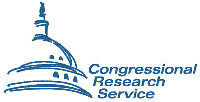United States Congress

Congressional Research Service Reports
Date of this Version
2009
Abstract
Science and engineering activities have always been international. Scientists, engineers, and health professionals frequently communicate and cooperate with one another without regard to national boundaries. This report discusses international science and technology (S&T) diplomacy, instances when American leadership in S&T is used as a diplomatic tool to enhance another country’s development and to improve understanding by other nations of U.S. values and ways of doing business. According to the National Research Council, five developmental challenges where S&T could play a role include child health and child survival, safe water, agricultural research to reduce hunger and poverty, micro-economic reform, and mitigation of natural disasters.
Title V of the Foreign Relations Authorization Act, FY1979 (P.L. 95-426) provides the current legislative guidance for U.S. international S&T policy. This act states that Department of State (DOS) is the lead federal agency in developing S&T agreements. The National Science and Technology Policy, Organization, and Priorities Act of 1976 (P.L. 94-282) states that the director of the White House Office of Science and Technology Policy (OSTP) is to advise the President on international S&T cooperation policies and the role of S&T considerations in foreign relations. DOS sets the overall policy direction for U.S. international S&T diplomacy, and works with other federal agencies as needed. OSTP acts as a interagency liaison. A number of federal agencies that both sponsor research and use S&T in developing policy are involved in international S&T policy.
A fundamental question is why the United States should invest in international S&T diplomacy instead of domestic research and development (R&D) and science, technology, engineering, and mathematics education (STEM) activities, which are facing budget constraints. If Congress should decide that funding international S&T activities is important, agreeing on a policy goal beyond enhancing the country’s development, such as improving U.S. relations with other countries, or enhancing popular opinion of the United States may help set priorities.
Policy options identified for Congress by expert committees who have assessed U.S. international S&T diplomacy efforts include ensuring a baseline of science, engineering, and technical (SET) literacy among all appropriate DOS personnel, increasing the presence overseas of personnel with significant SET expertise, and expanding the Department’s engagement within global SET networks through exchanges, assistance, and joint research activities addressing key global issues. Other proposed actions include increasing USAID support that builds S&T capacity in developing countries, and orienting other departments and agencies S&T developing country programs to support the development priorities of the host countries. Another proposal would establish a new U.S. government organization called the “Development Applications Research Institute” (DARI) to develop and apply innovative technologies to development problems. In all of these efforts, Congress might wish to consider enhancing the prominence of the STAS, and coordination among S&T leaders at OES, STAS, and OSTP.
On June 4, 2009, President Obama announced several international S&T diplomacy programs in Muslim-majority countries including a new fund for technological development in these countries, establishing centers of scientific excellence, and appointing new science envoys. On June 8, 2009, the House passed the International Science and Technology Cooperation Act of 2009 (H.R. 1736), which would require the OSTP Director to establish an interagency committee to identify and coordinate international science and technology cooperation.


Comments
Published by Congressional Research Service, 7-5700, www.crs.gov, RL34503